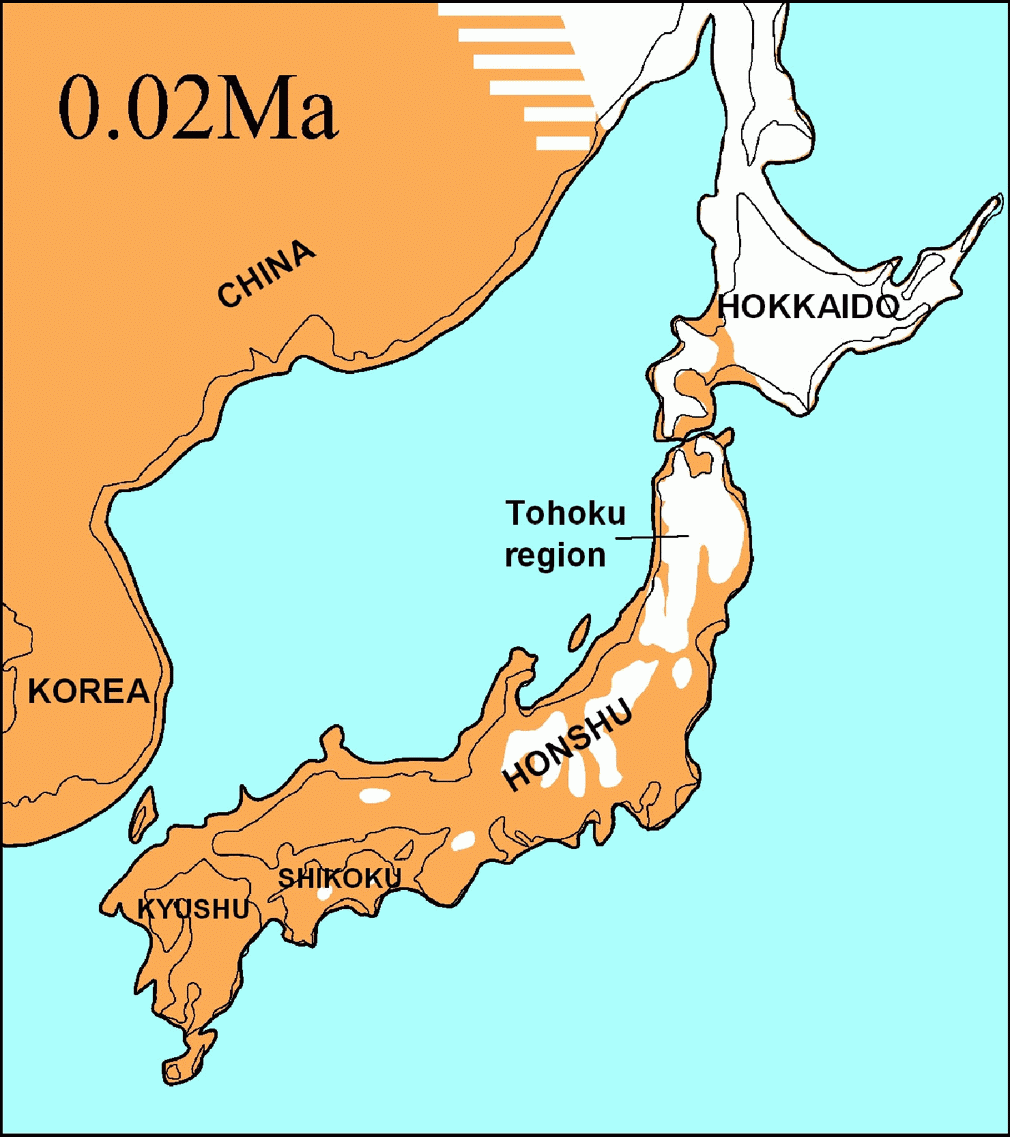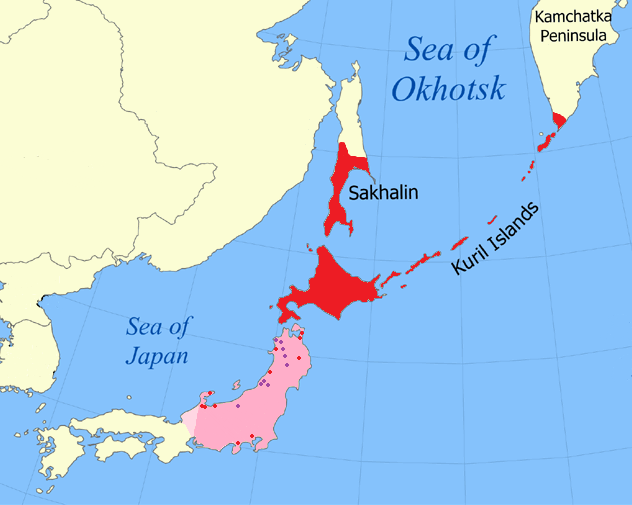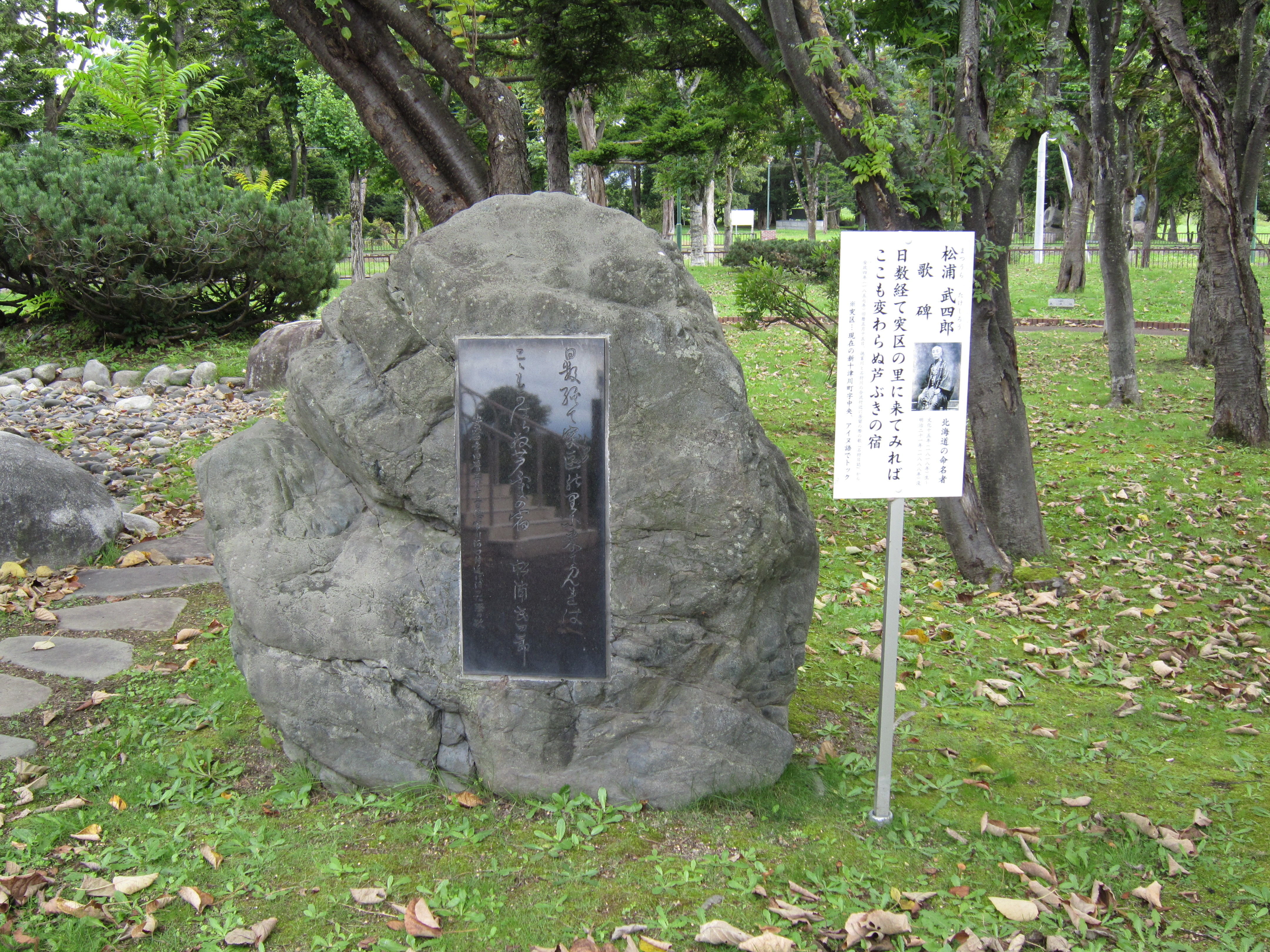|
Kitami, Hokkaidō
is a city in Okhotsk Subprefecture, Hokkaido, Japan. It is the most populous city and the commercial center in the subprefecture, although the subprefecture capital is Abashiri. Kitami is physically in the middle of Okhotsk Subprefecture. The Kitami Mountains are nearby and are the main reason behind the city's name. The city is the result of the merger of Kitami, Tanno, Tokoro and Rubeshibe towns in 2006 administrative reform. Kitami developed mainly in commerce and industry/service industries, Tanno in agriculture, Tokoro in fishery and agriculture, and Rubeshibe in forestry and tourism on hot springs. Due to the characteristics of the region, Kitami has the highest onion and white flower bean production in Japan. Scallop fishing also flourishes, which makes it the "birthplace of scallop farming" in the country. In addition, the region is home to historical and tourist places like the Pearson Museum, Wakka Wild Flower Garden, and Tokoro Ruins, which are listed as " Hokk ... [...More Info...] [...Related Items...] OR: [Wikipedia] [Google] [Baidu] |
Cities Of Japan
A is a local Public administration, administrative unit in Japan. Cities are ranked on the same level as and , with the difference that they are not a component of . Like other contemporary administrative units, they are defined by the Local Autonomy Law of 1947. City status Article 8 of the Local Autonomy Law sets the following conditions for a municipality to be designated as a city: *Population must generally be 50,000 or greater (原則として人口5万人以上) *At least 60% of households must be established in a central urban area (中心市街地の戸数が全戸数の6割以上) *At least 60% of households must be employed in commerce, industry or other urban occupations (商工業等の都市的業態に従事する世帯人口が全人口の6割以上) *Any other conditions set by prefectural ordinance must be satisfied (他に当該都道府県の条例で定める要件を満たしていること) The designation is approved by the prefectural governor and t ... [...More Info...] [...Related Items...] OR: [Wikipedia] [Google] [Baidu] |
Rubeshibe, Hokkaido
was a town located in Tokoro District, Abashiri Subprefecture (now Okhotsk Subprefecture), Hokkaido, Japan. Since March 5, 2006 Rubeshibe, along with the towns of Tanno and Tokoro (all from Tokoro District), was merged into the expanded city of Kitami. In December 2005, the town had an estimated population of 8,704 and a density Density (volumetric mass density or specific mass) is the ratio of a substance's mass to its volume. The symbol most often used for density is ''ρ'' (the lower case Greek letter rho), although the Latin letter ''D'' (or ''d'') can also be u ... of 15.41 persons per km2. The total area was 564.69 km2. Climate References External linksKitami city website Dissolved municipalities of Hokkaido Kitami {{Hokkaido-geo-stub ... [...More Info...] [...Related Items...] OR: [Wikipedia] [Google] [Baidu] |
Japan
Japan is an island country in East Asia. Located in the Pacific Ocean off the northeast coast of the Asia, Asian mainland, it is bordered on the west by the Sea of Japan and extends from the Sea of Okhotsk in the north to the East China Sea in the south. The Japanese archipelago consists of four major islands—Hokkaido, Honshu, Shikoku, and Kyushu—and List of islands of Japan, thousands of smaller islands, covering . Japan has a population of over 123 million as of 2025, making it the List of countries and dependencies by population, eleventh-most populous country. The capital of Japan and List of cities in Japan, its largest city is Tokyo; the Greater Tokyo Area is the List of largest cities, largest metropolitan area in the world, with more than 37 million inhabitants as of 2024. Japan is divided into 47 Prefectures of Japan, administrative prefectures and List of regions of Japan, eight traditional regions. About three-quarters of Geography of Japan, the countr ... [...More Info...] [...Related Items...] OR: [Wikipedia] [Google] [Baidu] |
History Of Japan
The first human inhabitants of the Japanese archipelago have been traced to the Japanese Paleolithic, Paleolithic, around 38–39,000 years ago. The Jōmon period, named after its cord-marked pottery, was followed by the Yayoi period in the first millennium BC when new inventions were introduced from Asia. During this period, the first known written reference to Japan was recorded in the Chinese ''Book of Han'' in the first century AD. Around the 3rd century BC, the Yayoi people from the continent immigrated to the Japanese archipelago and introduced iron technology and agricultural civilization. Because they had an agricultural civilization, the population of the Yayoi began to grow rapidly and ultimately overwhelmed the Jōmon period, Jōmon people, natives of the Japanese archipelago who were hunter-gatherers. Between the fourth and ninth centuries, Japan's many kingdoms and tribes gradually came to be unified under a centralized government, nominally controlled by the Empe ... [...More Info...] [...Related Items...] OR: [Wikipedia] [Google] [Baidu] |
Edo Period
The , also known as the , is the period between 1600 or 1603 and 1868 in the history of Japan, when the country was under the rule of the Tokugawa shogunate and some 300 regional ''daimyo'', or feudal lords. Emerging from the chaos of the Sengoku period, the Edo period was characterized by prolonged peace and stability, urbanization and economic growth, strict social order, Isolationism, isolationist foreign policies, and popular enjoyment of Japanese art, arts and Culture of Japan, culture. In 1600, Tokugawa Ieyasu prevailed at the Battle of Sekigahara and established hegemony over most of Japan, and in 1603 was given the title ''shogun'' by Emperor Go-Yōzei. Ieyasu resigned two years later in favor of his son Tokugawa Hidetada, Hidetada, but maintained power, and defeated the primary rival to his authority, Toyotomi Hideyori, at the Siege of Osaka in 1615 before his death the next year. Peace generally prevailed from this point on, making samurai largely redundant. Tokugawa sh ... [...More Info...] [...Related Items...] OR: [Wikipedia] [Google] [Baidu] |
Sakhalin
Sakhalin ( rus, Сахали́н, p=səxɐˈlʲin) is an island in Northeast Asia. Its north coast lies off the southeastern coast of Khabarovsk Krai in Russia, while its southern tip lies north of the Japanese island of Hokkaido. An island of the West Pacific, Sakhalin divides the Sea of Okhotsk to its east from the Sea of Japan to its southwest. It is administered as part of Sakhalin Oblast and is the largest island of Russia, with an area of . The island has a population of roughly 500,000, the majority of whom are Russians. The indigenous peoples of the island are the Ainu, Oroks, and Nivkhs, who are now present in very small numbers. The island's name is derived from the Manchu word ''Sahaliyan'' (), which was the name of the Qing dynasty city of Aigun. The Ainu people of Sakhalin paid tribute to the Yuan, Ming, and Qing dynasties and accepted official appointments from them. Sometimes the relationship was forced but control from dynasties in China was loose ... [...More Info...] [...Related Items...] OR: [Wikipedia] [Google] [Baidu] |
Sea Of Okhotsk
The Sea of Okhotsk; Historically also known as , or as ; ) is a marginal sea of the western Pacific Ocean. It is located between Russia's Kamchatka Peninsula on the east, the Kuril Islands on the southeast, Japan's island of Hokkaido on the south, the island of Sakhalin along the west, and a stretch of eastern Siberian coast along the west and north. Its northeast corner is the Shelikhov Gulf. The sea is named for the port of Okhotsk, itself named for the Okhota River. Geography The Sea of Okhotsk covers an area of , with a mean depth of and a maximum depth of . It is connected to the Sea of Japan on either side of Sakhalin: on the west through the Sakhalin Gulf and the Gulf of Tartary; on the south through the La Pérouse Strait. In winter, navigation on the Sea of Okhotsk is impeded by ice floes. Ice floes form due to the large amount of freshwater from the Amur River, lowering the salinity of upper levels, often raising the freezing point of the sea surface. The ... [...More Info...] [...Related Items...] OR: [Wikipedia] [Google] [Baidu] |
Ainu Languages
The Ainu languages ( ), sometimes known as Ainuic, are a small language family, often regarded as a language isolate, historically spoken by the Ainu people of northern Japan and neighboring islands, and formerly in parts of the Asian mainland, including the southern part of the Kamchatka Peninsula. The primary varieties of Ainu are alternately considered a group of closely related languages or divergent dialects of a single language isolate. The only surviving variety is Hokkaido Ainu, which UNESCO lists as critically endangered. Sakhalin Ainu and Kuril Ainu are now extinct. Toponymic evidence suggests Ainu was once spoken in northern Honshu and that much of the historically attested extent of the family was due to a relatively recent expansion northward. No genealogical relationship between Ainu and any other language family has been demonstrated, despite numerous attempts. Varieties Recognition of the different varieties of Ainu spoken throughout northern Japan and its s ... [...More Info...] [...Related Items...] OR: [Wikipedia] [Google] [Baidu] |
Hokkaidō Development Commission
The , sometimes referred to as Hokkaidō Colonization Office or simply the Kaitakushi, was a government agency in early Meiji Japan. Tasked with the administration, economic development, and securing of the northern frontier in what, at the time of establishment, was known as Ezo, it was established in 1869 and disbanded in 1882. Background During the Edo period, the Matsumae Domain was responsible for overseeing Japanese territory and trade with the local Ainu in Ezo (the area covered by the term extending beyond what is now Hokkaidō into Karafuto and the Chishima Islands), other than for two periods (1799–1821, and again from 1855), when the ''bakufu'' assumed direct control in the face of increasing Russian interest in the region. Following the Meiji Restoration, in the fourth month of 1868, the new government established the , a judicial office in Hakodate that subsumed the functions of the erstwhile Hakodate bugyō. History In the aftermath of the Battle of Hakod ... [...More Info...] [...Related Items...] OR: [Wikipedia] [Google] [Baidu] |
Meiji (era)
The was an era of Japanese history that extended from October 23, 1868, to July 30, 1912. The Meiji era was the first half of the Empire of Japan, when the Japanese people moved from being an isolated feudal society at risk of colonization by Western powers to the new paradigm of a modern, industrialized nation state and emergent great power, influenced by Western scientific, technological, philosophical, political, legal, and aesthetic ideas. As a result of such wholesale adoption of radically different ideas, the changes to Japan were profound, and affected its social structure, internal politics, economy, military, and foreign relations. The period corresponded to the reign of Emperor Meiji. It was preceded by the Keiō era and was succeeded by the Taishō era, upon the accession of Emperor Taishō. The rapid modernization during the Meiji era was not without its opponents, as the rapid changes to society caused many disaffected traditionalists from the former samu ... [...More Info...] [...Related Items...] OR: [Wikipedia] [Google] [Baidu] |
Matsuura Takeshirō
was a Japanese explorer, cartographer, writer, painter, priest, and antiquarian. During the late Edo period and Bakumatsu he journeyed six times to Ezo, including to Sakhalin and the Kuriles. In the early Meiji period he was an official in the Hokkaidō Development Commission. Instrumental in the naming of the island and many of its places, he is sometimes referred to as the "godparent of Hokkaidō". Name The fourth child of , this is reflected in the or "son and fourth child" component of his given name. Born at the Hour of the Tiger in the Year of the Tiger, the ''Take'' element of his name comes from the Japanese for bamboo, with which the tiger is closely associated. Later he switched the character for with that for (as in ). In adulthood he took the official name of , his ''imina'', his '' azana'' being . When he entered the Buddhist priesthood in Nagasaki at the age of twenty-one he assumed the Dharma name . He is also known to have used the art name from 1859; th ... [...More Info...] [...Related Items...] OR: [Wikipedia] [Google] [Baidu] |
Hokkaidō Heritage
is an initiative aimed at the valorization and transmission to the next generation of the tangible and intangible natural, cultural, historical, and industrial heritage of Hokkaidō, Japan. It is advanced by the , an Nonprofit organization#Japan, NPO, and endorsed by the prefectural government, amongst other bodies. Seventy-four assets have been identified to date in four sessions, the first twenty-five on 22 October 2001, a further twenty-seven on 22 October 2004, fifteen more on 1 November 2018, and, most recently, an additional six (together with the split of "The Ubagami Daijingū Festival and Esashi Oiwake" into two separate assets) on 13 October 2022. The scheme does not include a formal system for management or preservation but is intended to be a citizen-led movement with the concomitant benefits of promoting tourism, fostering pride and a sense of belonging in local communities, developing human capital and potential, and the revitalization of local economies. See also ... [...More Info...] [...Related Items...] OR: [Wikipedia] [Google] [Baidu] |





